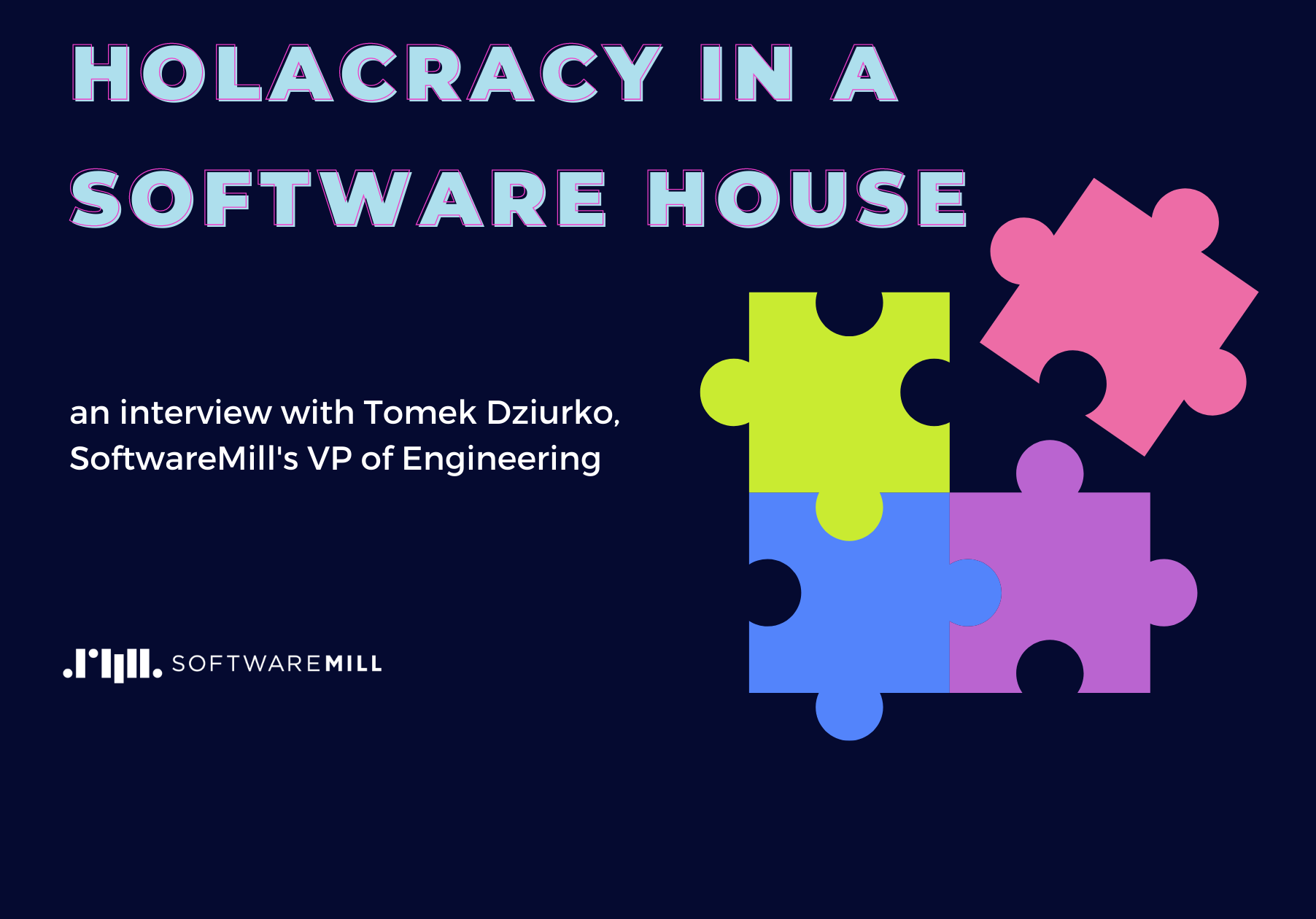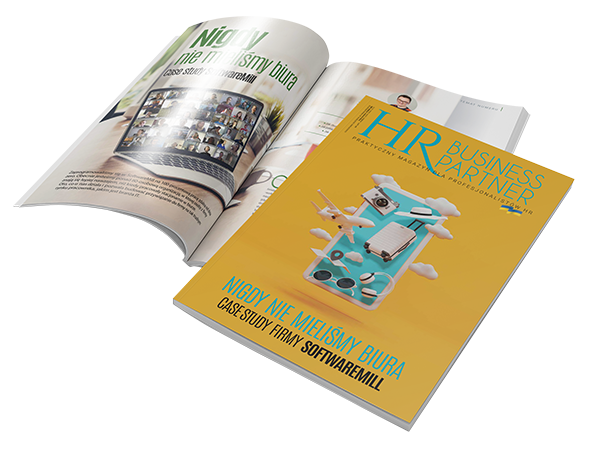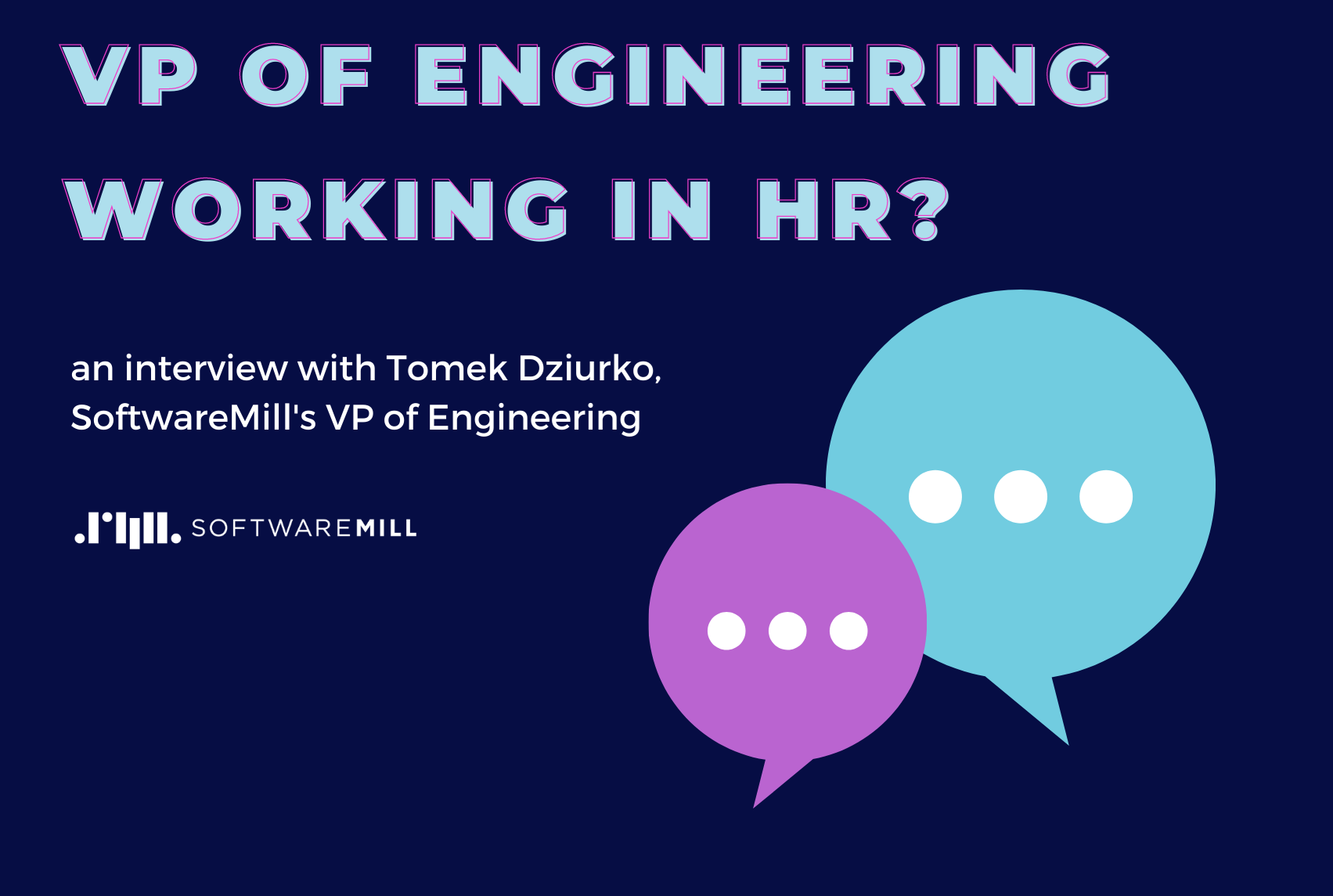Part 2 of the interview with Tomek Dziurko, SoftwareMill’s VP of Engineering
Part 1 is available here
Kamila Stępniowska talks to Tomek Dziurko about how decisions are made at SoftwareMill, how guilds work, and why the company opted for their own version of holacracy.
Kamila Stępniowska (KS): The closer I got to know SoftwareMill, the more it began to remind me of Spotify in terms of its culture of organization. From what I know, that’s not where your inspiration came from, but Netflix is a kind of newly-discovered source of inspiration. You discussed Reed Hastings’ “No Rules Rules: Netflix and the Culture of Reinvention” at your reading club’s meetings. Are you thinking of implementing any of the organizational solutions presented in the book?
Tomasz Dziurko (TD): We’re planning to. What we really liked was the emphasis on feedback culture – very honest, regular feedback, focused on what can be done better. The book broadly describes a fairly developed system for giving feedback so that it’s constructive and not taken as a personal attack. At SoftwareMill, we work in a similar manner, however, we feel we can still improve in this area. We are aware that giving and receiving feedback is generally a tough nut to crack. I assume that little by little, we will get to where Netflix is: providing feedback as often as possible. Feedback that’s timely, delivered following a given situation is a lot more effective because both sides still remember all of it and it’s easier to communicate.
KS: It seems that SoftwareMill is open to internal discussion. You don’t have departments but so-called guilds. I take there’s more to that than just a different name?
TD: SoftwareMill used to be a flat company, so everyone could express themselves in any area. Whenever a decision had to be made, we asked for everyone’s opinion, and we made decisions together by a company-wide vote. And it was great, it worked well until we grew to about 40 people. It then turned out that not all decisions can be made together. Some people simply don’t have the knowledge or context to consciously vote for or against something. That’s when we decided that we need to narrow the groups down a little in terms of competences – to people who really want to contribute in a certain area, are interested in what’s going on, and are somewhat familiar with a given part of the company’s activity. We introduced a holacracy, or at least that was our starting point.
At SoftwareMill, as you mentioned, we have guilds – every area of the company’s activity has its own guild. It also has a guild master who coordinates activities and makes sure that the things that need to happen actually happen. At the moment, many smaller decisions concerning a specific area of activity of the company are made within the guilds. The decisions are made by people who really have the knowledge and context, and who know what the risks, consequences, business goals, and reasons for the course of action are. It’s important to note that anyone can belong to a guild – you simply need to express interest and consciously decide that “OK, I’m interested in this area of the company’s activity, so I want to do this, I want to and have the time to keep track of this.” We haven’t completely got rid of our flat structure. Decisions that impact the entire company are still made via voting by every member of the company. Here, we stick to the values SoftwareMill grew out of – everyone can add do their own bit and shape the company.
Full article can be read at SoftwareMill’s Blog here.





